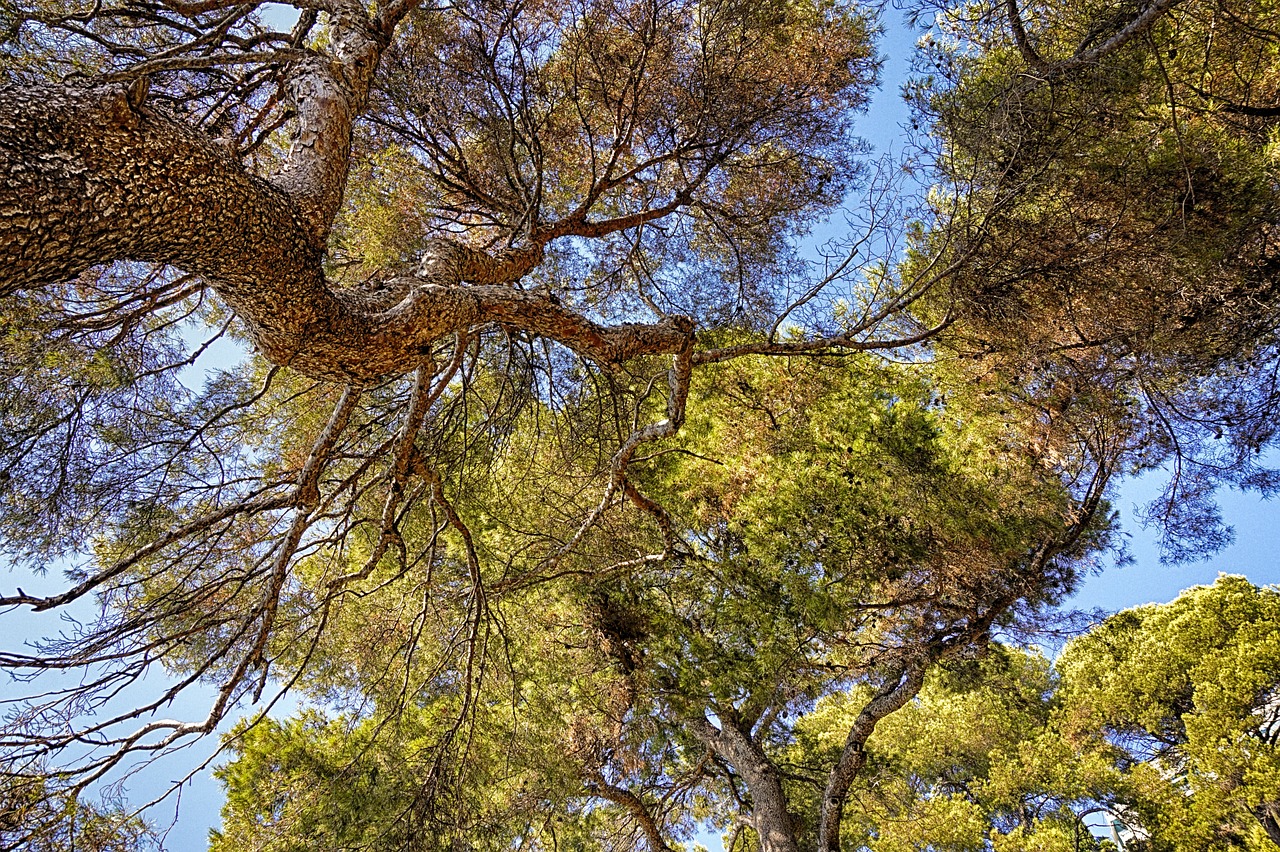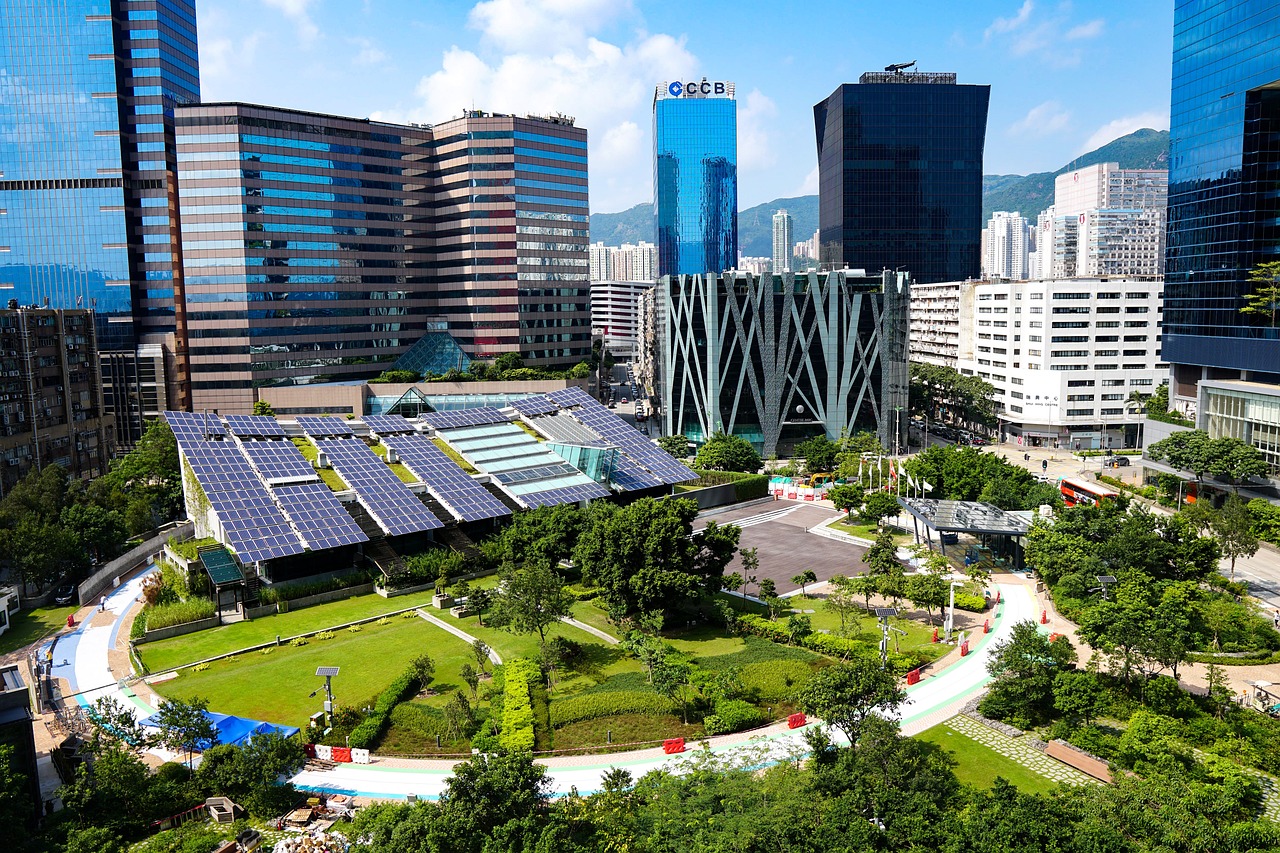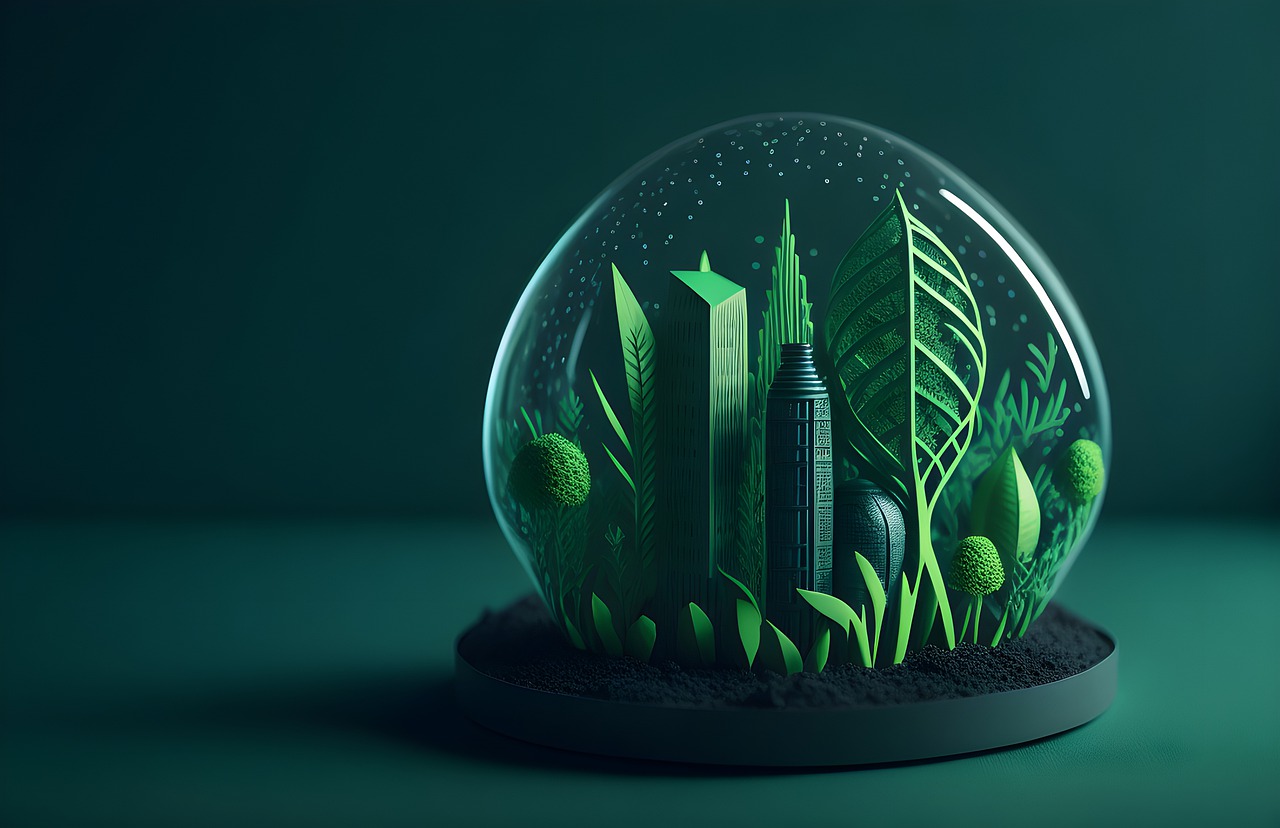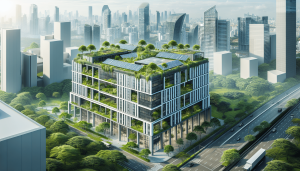Let’s dive into the important world of water conservation within green buildings. As our global population grows, so does the demand for clean, usable water. Green buildings offer innovative solutions to tackle this challenge by integrating advanced water-saving techniques and technologies. Our journey through this article explores the various strategies employed to reduce water consumption in green buildings, ensuring a more sustainable and efficient use of this precious resource. Together, we’ll uncover how these practices not only conserve water but also promote a healthier environment for us all. Have you ever wondered how water conservation works in green buildings? We’re excited to dive into the world of sustainable architecture and explore the strategies that make these buildings more environmentally friendly. Water conservation is an essential component of green buildings, ensuring that we use our precious water resources wisely and efficiently. In this article, we’ll delve into various water-saving techniques and technologies that can be implemented in green buildings, making them a model for sustainability.
What is Water Conservation in Green Buildings?
Water conservation in green buildings refers to the practice of reducing water use through strategic planning and technology. This approach not only helps to preserve water resources but also reduces the building’s operational costs and environmental footprint.
Why is Water Conservation Important?
Water conservation is crucial for several reasons. Firstly, freshwater is a finite resource, and with growing populations and climate change, its availability is becoming increasingly strained. By conserving water, we ensure that future generations will also have access to this vital resource. Additionally, reducing water usage helps decrease the energy required for water treatment and distribution, leading to lower greenhouse gas emissions.
Goals of Water Conservation in Green Buildings
The primary goals of water conservation in green buildings are to minimize water waste, maximize efficiency, and leverage sustainable water sources. Achieving these goals involves a combination of architectural design, plumbing systems, landscaping, and behavioral practices.
Strategies for Water Conservation in Green Buildings
There are numerous strategies for conserving water in green buildings. These strategies can be broadly classified into three categories: indoor water conservation, outdoor water conservation, and innovative water management technologies.
Indoor Water Conservation
Indoor water use accounts for a significant portion of a building’s total water consumption. By implementing the following strategies, we can significantly reduce the amount of water used indoors.
Low-Flow Fixtures
Low-flow fixtures, such as faucets, showerheads, and toilets, use less water than traditional fixtures while maintaining functionality and comfort.
| Fixture Type | Standard Flow Rate | Low-Flow Rate | Water Savings (%) |
|---|---|---|---|
| Faucets | 2.2 GPM | 1.5 GPM | ~32% |
| Showerheads | 2.5 GPM | 2.0 GPM | ~20% |
| Toilets | 1.6 GPF | 1.28 GPF | ~20% |
GPM: Gallons Per Minute, GPF: Gallons Per Flush
Dual-Flush Toilets
Dual-flush toilets offer two flush options: a low-volume flush for liquid waste and a higher volume flush for solid waste. By using the appropriate flush option, we can save significant amounts of water.
Faucet Aerators
Faucet aerators mix air with water, reducing the flow rate while maintaining the same pressure. This simple and inexpensive device can result in substantial water savings without compromising performance.
Efficient Appliances
Installing water-efficient appliances, like dishwashers and washing machines, can also contribute to indoor water conservation. These appliances are designed to use less water per cycle, making them a smart choice for green buildings.
Outdoor Water Conservation
Outdoor water use primarily involves landscaping and irrigation, which can consume a considerable amount of water. The following strategies can help reduce outdoor water usage.
Drought-Tolerant Landscaping
Drought-tolerant plants are adapted to survive with minimal water. By incorporating these plants into our landscaping design, we can significantly reduce the need for irrigation.
Xeriscaping
Xeriscaping is a landscaping method that uses drought-resistant plants and efficient irrigation techniques. This approach not only conserves water but also reduces maintenance costs.
Rainwater Harvesting
Rainwater harvesting involves collecting and storing rainwater for use in irrigation and other non-potable applications. This practice can greatly reduce the demand for municipal water supplies.
Efficient Irrigation Systems
Installing efficient irrigation systems, such as drip irrigation and smart controllers, can help minimize water waste. These systems deliver water directly to the plant roots, reducing evaporation and runoff.
Innovative Water Management Technologies
In addition to conventional water-saving methods, innovative technologies can help us manage our water resources more effectively.
Greywater Recycling
Greywater recycling systems collect and treat wastewater from sinks, showers, and washing machines for reuse in toilets and irrigation. This process reduces the demand for freshwater and lessens the strain on municipal wastewater systems.
On-Site Water Treatment
On-site water treatment systems purify wastewater for reuse within the building. These systems can treat both greywater and blackwater (sewage), providing a sustainable water supply for various applications.
Leak Detection Systems
Leak detection systems use sensors and monitoring devices to identify and address leaks promptly. By detecting leaks early, we can prevent water waste and avoid costly damage.
Smart Water Meters
Smart water meters provide real-time data on water usage, allowing building managers to monitor consumption patterns and identify opportunities for conservation. These meters can also help detect leaks and other inefficiencies.

Case Studies: Successful Implementation of Water Conservation Strategies
Let’s look at some real-world examples of green buildings that have successfully implemented water conservation strategies.
The Bullitt Center
Located in Seattle, Washington, the Bullitt Center is a prime example of a green building that prioritizes water conservation. The building features a rainwater harvesting system that collects and treats rainwater for potable use. Additionally, the Bullitt Center uses composting toilets, which eliminate the need for water in waste disposal.
The Edge Amsterdam
The Edge in Amsterdam is another shining example of a green building that incorporates water-saving technologies. The building uses a greywater recycling system to reuse wastewater for toilet flushing and irrigation. Furthermore, the landscape design focuses on drought-tolerant plants, reducing the need for supplemental watering.
One Central Park
One Central Park in Sydney, Australia, showcases a successful integration of water conservation strategies in a residential setting. The development includes a central on-site water recycling plant that treats greywater and blackwater for reuse in toilets, irrigation, and cooling systems. This system significantly reduces the building’s reliance on municipal water supplies.
Benefits of Water Conservation in Green Buildings
Implementing water conservation strategies in green buildings offers numerous benefits beyond the obvious environmental advantages.
Cost Savings
By reducing water consumption, green buildings can lower their utility bills. Water-efficient fixtures and systems often have lower operating costs and require less maintenance, contributing to long-term savings.
Increased Property Value
Green buildings with effective water conservation measures tend to have higher property values. Potential buyers and tenants are increasingly attracted to environmentally responsible properties, making them a sound investment.
Regulatory Compliance
Many regions have implemented regulations and incentives to encourage water conservation in buildings. By adopting water-saving strategies, green buildings can more easily comply with these regulations and take advantage of available incentives.
Reduced Environmental Impact
Water conservation in green buildings reduces the strain on local water supplies and wastewater systems. It also decreases the energy needed for water treatment and distribution, leading to lower greenhouse gas emissions.
Enhanced Occupant Health and Comfort
Water-efficient fixtures and systems can improve the overall indoor environment, promoting occupant health and comfort. For example, low-flow showerheads can maintain adequate water pressure while conserving water, enhancing the user experience.

Challenges and Solutions in Implementing Water Conservation Strategies
While the benefits of water conservation in green buildings are clear, there are several challenges to consider. Understanding these challenges and implementing solutions can help us achieve our water-saving goals.
Upfront Costs
One of the main challenges of incorporating water conservation strategies is the initial investment. High-efficiency fixtures, rainwater harvesting systems, and on-site water treatment technologies can be costly to install.
Solution: Seek out incentives, grants, and rebates offered by governments and utility companies to offset initial costs. Additionally, the long-term savings on utility bills and maintenance can make the investment worthwhile.
Technology Integration
Integrating new water-saving technologies with existing building systems can be complex. Ensuring compatibility and seamless operation requires careful planning and expertise.
Solution: Work with experienced professionals who specialize in green building and water conservation technologies. They can help design and implement a cohesive system that maximizes efficiency and performance.
Maintenance and Monitoring
Water conservation systems, such as greywater recycling and on-site treatment, require regular maintenance and monitoring to ensure proper operation. This can be a challenge for building managers who are not familiar with these systems.
Solution: Conduct thorough training for building managers and occupants on the operation and maintenance of water conservation systems. Consider partnering with a service provider for ongoing support and monitoring.
Public Perception and Behavior
Changing the behavior and perception of building occupants can be challenging. People may be resistant to adopting new practices, such as using dual-flush toilets or understanding the benefits of greywater recycling.
Solution: Implement educational programs and campaigns to raise awareness about the importance of water conservation. Provide clear instructions and information on how to use water-saving devices and systems.
Future Trends in Water Conservation for Green Buildings
As technology advances and our understanding of sustainable practices grows, we can expect to see several emerging trends in water conservation for green buildings.
Smart Water Management Systems
The integration of IoT (Internet of Things) technologies in water management is poised to revolutionize how we monitor and control water usage. Smart water management systems can provide real-time data and analytics, enabling building managers to optimize water conservation efforts.
Advanced Water Recycling Technologies
Future advancements in water recycling technologies will likely make it more feasible and cost-effective to treat and reuse wastewater. These technologies could include more efficient filtration methods, biological treatment processes, and energy-efficient systems.
Water Positive Buildings
The concept of water-positive buildings, which generate more water than they consume, is gaining traction. This ambitious goal will require innovative approaches to water harvesting, recycling, and conservation. By pushing the boundaries of sustainable design, we can create buildings that contribute positively to local water resources.
Climate Resilient Design
With climate change impacting water availability and quality, future green buildings will need to incorporate climate-resilient design principles. These principles may include adaptive water management strategies, such as dynamic irrigation systems that respond to changing weather patterns, and materials that enhance water efficiency.

Conclusion
Water conservation in green buildings is a critical aspect of sustainable design. By implementing a combination of indoor and outdoor conservation strategies, as well as innovative water management technologies, we can create buildings that use water more efficiently and responsibly. The benefits of water conservation extend beyond environmental protection to include cost savings, increased property value, regulatory compliance, reduced environmental impact, and enhanced occupant health and comfort.
While there are challenges to overcome, the future of water conservation in green buildings looks promising. As we continue to develop and adopt new technologies and practices, we move closer to a more sustainable and resilient built environment. Together, we can make a significant impact on preserving our precious water resources for future generations.



